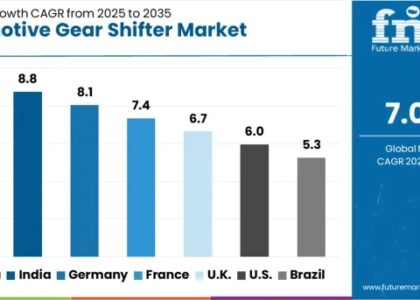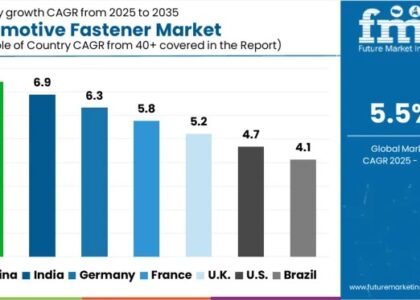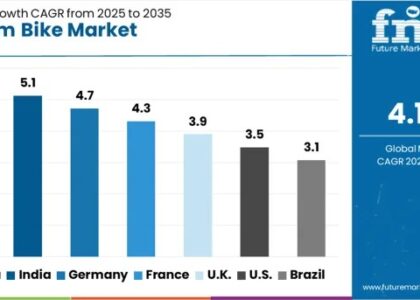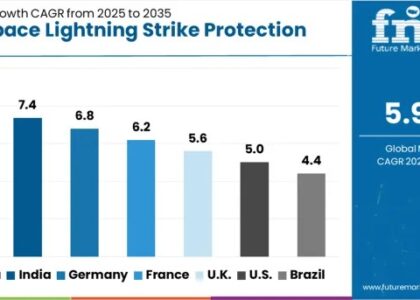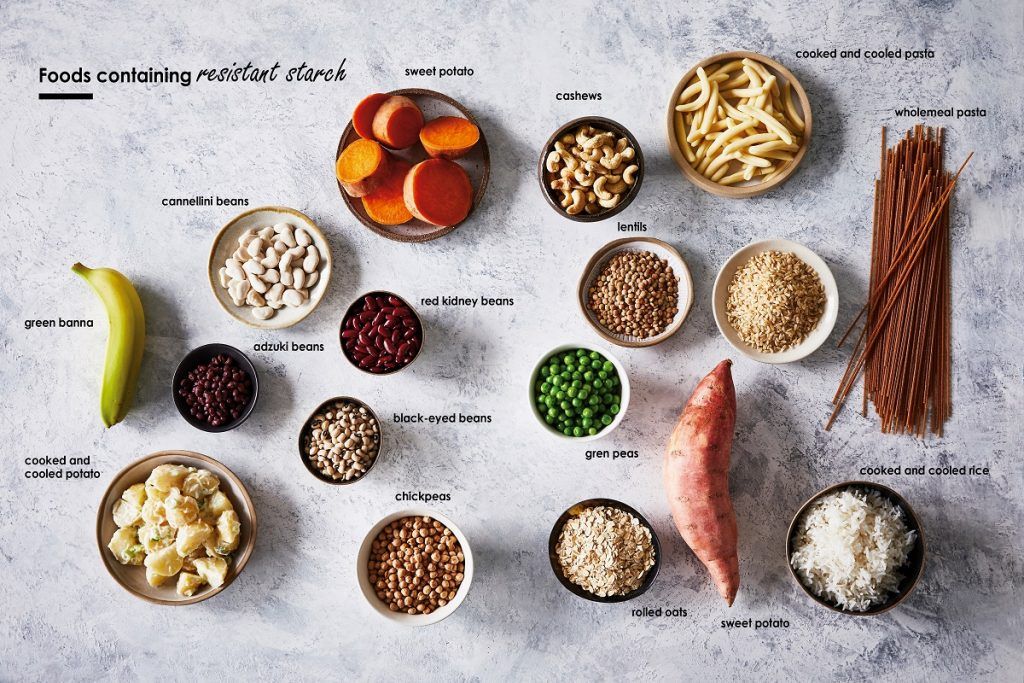
The Food Starch Market is experiencing strong expansion, fueled by rising processed goods and convenience food consumption. Manufacturers are using food starch to make clean-label and gluten-free products as consumers look for healthier options. The market is growing as a result of rising food industries in emerging markets and technological advances.
Food starch sales are expected to increase from US$ 20.92 billion in 2023 to US$ 28.83 billion in 2033, with a 3% annual growth rate predicted between 2023 and 2033.
The recent extraordinary expansion of the worldwide food starch industry can be attributed to a number of factors, including customer preferences for natural and clean-label products, convenience foods, and growing health consciousness.
Don’t miss this chance to stay up to date! Click here to see an example report on the food starch market :
https://www.futuremarketinsights.com/reports/sample/rep-gb-15445
The food starch market is experiencing robust expansion, driven by the increasing consumption of processed and convenience foods. Manufacturers are leveraging food starch to create clean-label and gluten-free products, catering to the growing demand for healthier alternatives. The market is expected to witness a steady growth, with food starch sales projected to reach US$ 28.83 billion by 2033, exhibiting a 3% annual growth rate between 2023 and 2033.
Key Points:
- Growing Trends: The recent expansion in the global food starch industry is attributed to customer preferences for natural and clean-label products, convenience foods, and a heightened focus on health consciousness.
- Clean-Label Demand: The surge in demand for clean-label products has driven the incorporation of clean-label starches into food formulations, providing consumers with transparent and natural ingredient options.
- Gluten-Free and Non-GMO: The market sees a notable trend towards gluten-free and non-GMO starches, catering to the increasing prevalence of gluten intolerance and consumer preferences for non-GMO foods.
- Challenges: Challenges such as limited raw material availability and price fluctuations, along with a complex regulatory landscape, pose constraints to market growth. However, these challenges also present opportunities for innovation and strategic partnerships within the industry
Key Takeaways:
- Market Valuation: The food starch market is predicted to grow from US$ 20.92 billion in 2023 to US$ 28.83 billion in 2033, with a 3% annual growth rate.
- Global Presence: In 2022, the United States accounted for a 24.3% share in the global food starch market, while the United Kingdom is projected to advance at a 2.8% CAGR from 2023 to 2033. The market in Japan held a 1.2% share in 2022, and the Indian market is predicted to progress steadily with a CAGR of 4.5% during the projected period
Segmentation Analysis:
- By Type: Modified Starch, Native Starch
- By Source: Maize, Wheat, Potatoes, Others
- By Application: Animal Feed, Bakery and Confectionery, Beverage, Cosmetics
- By Sales Channel: Offline Sales Channel (Supermarkets/Hypermarkets, Departmental Stores, Convenience Store, Other Sales Channel), Online Sales Channel (Company Website, E-commerce Platform)
- By Region: North America, Latin America, Europe, East Asia, South Asia, Oceania, The Middle East and Africa
A wide range of food applications, including baking, confectionery, dairy, sauces & dressings, and snacks, frequently use food starch. There are numerous sources of food starch, including corn, wheat, potatoes, and tapioca.
The increase in demand for clean-label products in recent years has been one of the major trends in the food starch business.
Consumers are actively looking for items with natural and recognisable ingredients since they are becoming more worried about the ingredients used in their food. Demand for food starch free of synthetic additives, preservatives, and genetically modified organisms (GMOs) has increased as a result of this.
Clean-label starches are being incorporated into food formulations by food manufacturers in response to this trend, providing customers with better and more transparent food options.
Another significant trend in the market for food starch is the growing popularity of gluten-free and non-GMO starches.
With the increasing prevalence of gluten intolerance and the rising consumer preference for non-GMO foods, the demand for starches that cater to these dietary needs has witnessed a substantial upswing.
Manufacturers are developing innovative gluten-free starches sourced from alternative grains and utilizing non-GMO crops to meet the diverse dietary requirements of consumers.
The market is not without its challenges. The limited availability of raw materials and price fluctuations pose significant constraints to market growth.
The complex regulatory landscape and stringent food safety standards necessitate careful compliance by industry players. However, these challenges also present opportunities for innovation and strategic partnerships within the industry.
The food starch industry is poised for substantial growth, driven by increasing consumer demand for healthier and functional food products.
Key market players are investing in research and development activities to introduce novel starch-based ingredients that enhance food products’ texture, stability, and nutritional profiles.
The strategic collaborations and mergers between companies are expected to fuel market expansion further and foster the development of innovative solutions.
If you want market insights that will alter the game, move swiftly! Waiting will just hasten the end of this exclusive offer. Buy today to change how you perceive the market :
https://www.futuremarketinsights.com/checkout/15445
Key Takeaways:
- The food starch market value reached US$ 20.12 billion in 2022, with a CAGR of 2.2% from 2018 to 2022.
- The market in the United States accounted for a 24.3% share in 2022 on a global level.
- The United Kingdom food starch industry is projected to advance at 2.8% CAGR from 2023 to 2033.
- The market for food starch in Japan accounted for 1.2% of the market share in 2022.
- India market for food starch is predicted to progress steadily with a CAGR of 4.5% during the projected period.
How is the Competition Structured in the Food Starch Industry?
The food starch industry is highly competitive, with players vying for market share and striving to differentiate themselves.
Key aspects of the competition in this industry include product differentiation, research and development, quality assurance, customer relationships, and market expansion strategies.
Competitors in the food starch industry focus on offering unique starch varieties derived from different sources. They invest in research and development to innovate and enhance functional properties. Rigorous quality control measures ensure high product quality.
Competitors’ key priority is building strong customer relationships through personalized solutions and exceptional service. They expand their market presence through strategic initiatives like mergers, acquisitions, and partnerships. These actions drive growth and enable access to new markets in the competitive food starch industry.
In this dynamic landscape, companies are driven to continuously innovate, maintain high standards, and foster strong customer loyalty to gain a competitive edge and thrive in the food starch market.
Recent Developments:
- Key market players are investing in research and development activities to introduce novel starch-based ingredients that enhance food products’ texture, stability, and nutritional profiles.
- Strategic collaborations and mergers between companies are expected to fuel market expansion further and foster the development of innovative solutions.
Segmentation Analysis
By Type:
- Modified Starch
- Native Starch
By Source:
- Maize
- Wheat
- Potatoes
- Other
By Application:
- Animal Feed
- Bakery and Confectionery
- Beverage
- Cosmetics
By Sales Channel:
- Offline Sales Channel
- Supermarkets/Hypermarkets
- Departmental Stores
- Convenience Store
- Other Sales Channel
- Online Sales Channel
- Company Website
- E-commerce Platform
By Region:
- North America
- Latin America
- Europe
- East Asia
- South Asia
- Oceania
- The Middle East and Africa
About Future Market Insights, Inc.
Future Market Insights, Inc. (ESOMAR certified, Stevie Award – recipient market research organization and a member of Greater New York Chamber of Commerce) provides in-depth insights into governing factors elevating the demand in the market. It discloses opportunities that will favor the market growth in various segments on the basis of Source, Application, Sales Channel and End Use over the next 10-years.
Contact:
Future Market Insights Inc.
Christiana Corporate, 200 Continental Drive,
Suite 401, Newark, Delaware – 19713, USA
T: +1-845-579-5705
For Sales Enquiries: sales@futuremarketinsights.com
Browse Other Reports: https://www.futuremarketinsights.com/reports
LinkedIn| Twitter| Blogs


